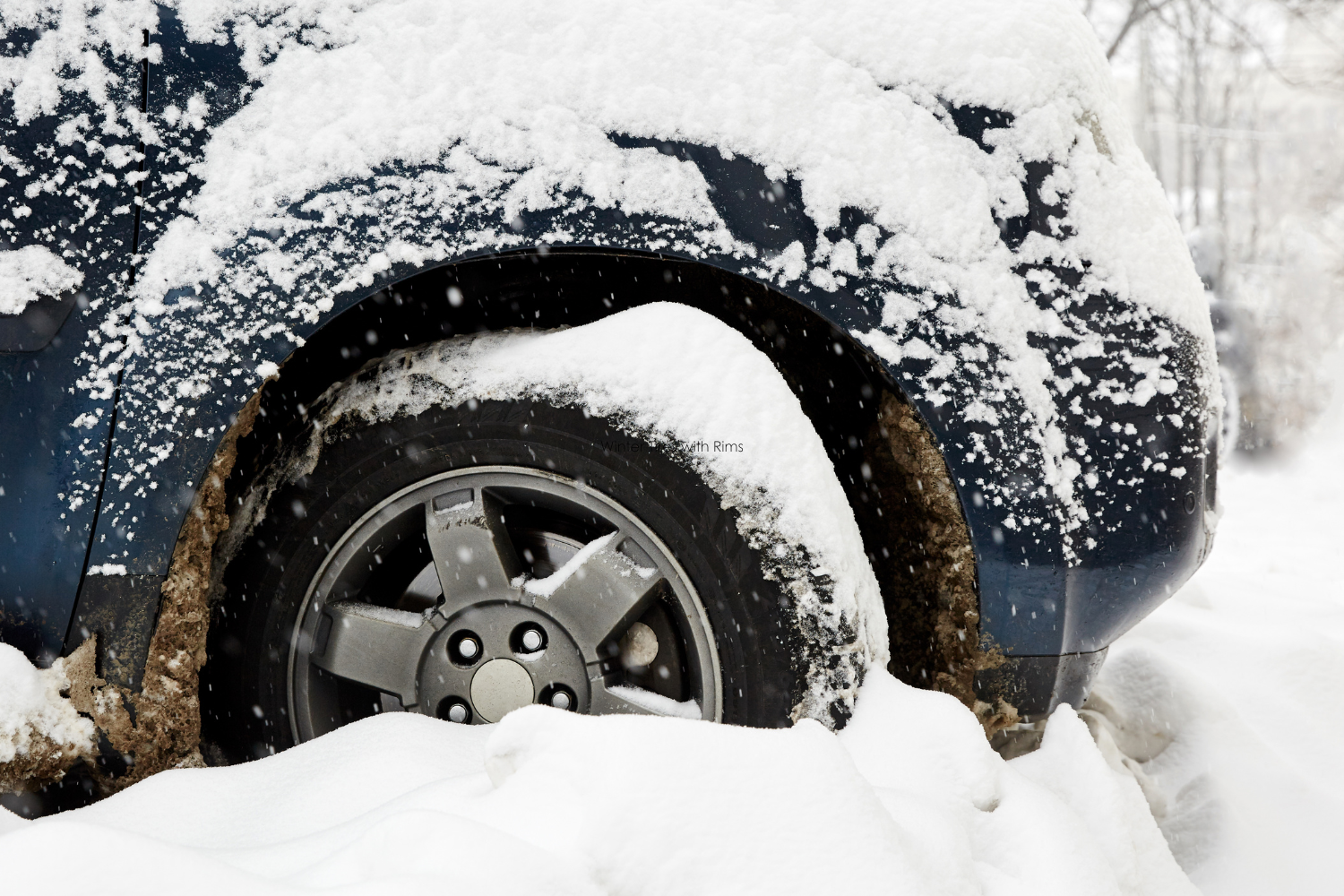Winter Tires with Rims
February 15, 2023

Winter Tires with Rims
Changing from summer to winter tires with rims on is common among motorists in erratic conditions like snow and ice. The unique tread levels, tread patterns, and sidewall design of winter tires are deliberately designed to deliver the best performance on snow-covered and slippery roads.
While the design and construction of the rubber itself contribute to many of the advantages of winter tires, the tire and rim size can also improve performance and save you cash.
Winter tires and rims are designed for actual winter weather
Having the correct tires and rims is very important in winter driving. Winter driving conditions can be very unpredictable, from deep snowfall to black ice. This year’s season presents a greater challenge for tires to generate traction than any other. Winter tires and rims are ideally suited to handle chilly temperatures, snow, and ice. They are expressly engineered to function in winter situations.
The Tread Rubber: an all-season or summer tire’s tread compound stiffens and loses some traction-giving ability in extremely cold weather. Winter tire tread rubber compositions are made to be flexible to mitigate this and improve tire traction.
The Tread Depth and Patterns: Winter tires have broader tread depths and distinctive tread patterns. In the ice, deeper tread depths improve traction while reducing snow accumulation. Winter tires have tread designs that channel slush and ice while expelling water.
Biting Edges: Winter tires also come with more biting edges and sipes, which are the dozens of tiny gaps in the tread that give traction on snow.
What Qualifies a Tire as a “Winter Tire”?
Winter tires frequently receive conflicting information, such as unnecessary winter tires. You do need to have winter tires. Winter tires don’t exist on all-season tires. Winter driving can be done with all-season tires. Most individuals do not comprehend the need to switch from all-season to winter tires when the temperature drops below 7°C, which is the truth. Even some individuals believe it’s OK always to have winter tires on. Here is the complete rundown on winter tires.
- The rubber used to make winter tires is malleable and designed to remain flexible in cold temperatures (below 7°C). In cold weather, all-season tires will stiffen, making it more difficult for you to halt and accelerate.
- Winter tires have a unique tread pattern intended to clear your tires on ice and snow. Varying tread patterns for dry roads and warm, rainy conditions are used on all-season tires.
- Installation of winter tires must always be done in sets of four. Tire wear may be uneven if two all-season tires and just two winter tires are installed. This entirely negates the advantages of having winter tires because it will make it harder for you to brake and accelerate in slippery conditions.
- Investing in a pair of winter rims will help you spend less on tire replacement. This will reduce the time it takes your local Trail tire store to replace your tires, saving you money when you do so.
- When not mounted on your car, your tires should be kept on a tire shelf at room temperature. They can be kept stacked, one on top of the other, but you must rotate them once each month to prevent one from deteriorating faster than the others. Additionally, you need to ensure that your tires remain dry while being kept. You may store your tires at the Trailtire shop for the safest possible storage.
Winter tires are a wise purchase for the colder months.
- Smaller size, big savings: At least three distinct wheel/tire sizes are frequently offered as factory options for a given car. For instance, based on trim options, the same model vehicle may come with 15-inch rims and 195/65 tires, 16-inch alloy rims, 205/55 tires, or 17-inch rims. You can get minus-sized if you replace either of the alloys with the standard rims and tire size.
People frequently believe that a larger tire/wheel combination will offer better grip and performance in icy conditions. However, a rim with a smaller diameter, a tire with a higher profile, and a narrower circumference slices through snow more efficiently. Your tires are slicing through the ice more effectively rather than “plowing” it when the load of the automobile is pressed against a more concentrated (smaller) collection of contact patches. The term “minus-sizing” is frequently used to describe this.
- Go for grit: Winter rims are more about intent than style. Winter wheels and tires will inevitably become soiled, wet, and frozen over time and time again. When choosing winter rims, keep things straightforward to save money. They should turn corners instead of turning heads. Additionally, switching to winter rims can shield your factory-installed (or aftermarket) rims from the corrosive effects of the winter weather, extending their lifespan and maintaining their aesthetic appeal.
- Storage: A set of winter-specific wheels won’t require any more storage capacity if you’ve previously invested in winter tires.
Why winter tires are more efficient when the temperature drops
The tread pattern, the sipes, and the tire compound make an excellent winter tire what it is. These tires are equipped to handle the weather when it gets chilly, and there is ice on the roadways.
Winter tires are designed with a specific tread pattern for better traction on icy, snowy, and wet surfaces. The wheel’s rotation will force the snow into the wider grooves, increasing traction. The tread has sipes or minuscule slots that let the tread blocks bend and drill down into the snow or ice. These sipes give extra traction.
The tire mix also has a higher proportion of natural rubber, which keeps it pliable and soft even in subfreezing temperatures if the tire composition isn’t intended to function in cold weather, as it is with summer tires.
The Bottom Line
Have you recently purchased a set of winter tires and rims? Or perhaps you already own a set that needs to be installed? Book an appointment at Trail tire auto centers.
Back

